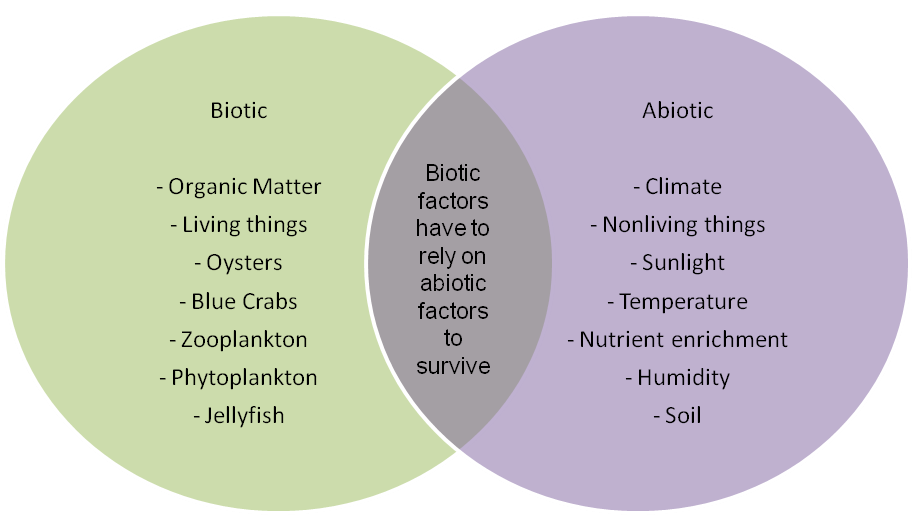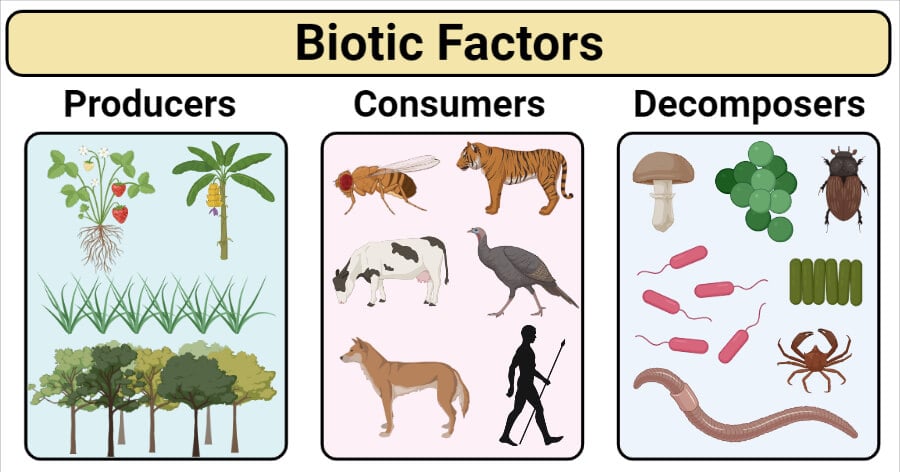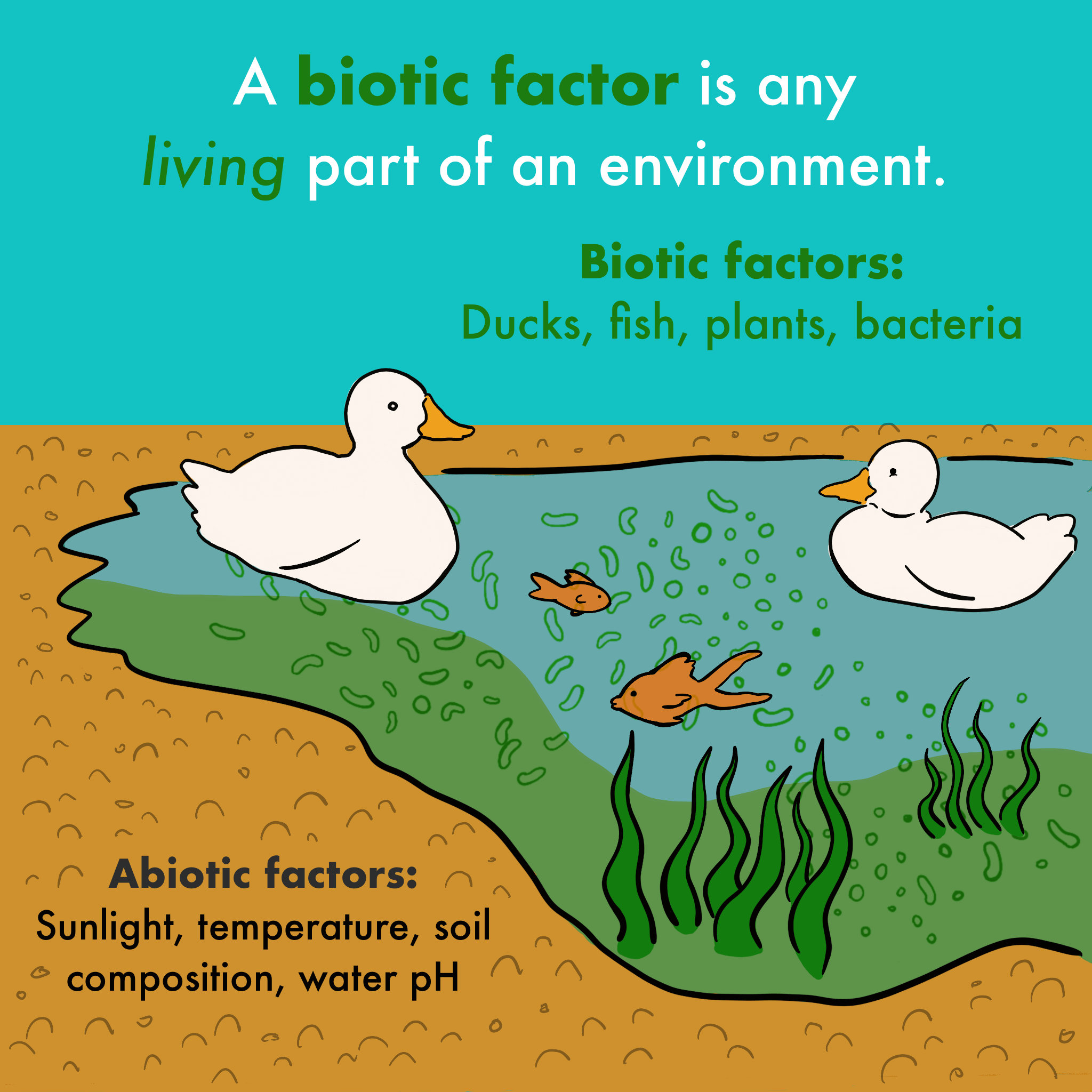Topic biotic components of an ecosystem examples: Explore the vibrant world of biotic components within ecosystems, where each organism plays a critical role in maintaining the balance and health of our planet"s diverse habitats.
Table of Content
- What are some examples of biotic components in an ecosystem?
- Understanding Biotic Components in Ecosystems
- Examples of Biotic Components
- The Role of Producers: Plants and Photosynthetic Organisms
- Consumers in the Ecosystem: Herbivores, Carnivores, and Omnivores
- Decomposers and Detritivores: Nature"s Recyclers
- Microorganisms and Their Impact on Ecosystem Health
- YOUTUBE: GCSE Biology - Biotic and Abiotic Factors
- Interactions Between Biotic Components: Competition and Cooperation
- Human Impact on Biotic Components of Ecosystems
- Conservation of Biotic Components: Challenges and Strategies
What are some examples of biotic components in an ecosystem?
Some examples of biotic components in an ecosystem include:
- Plants: Trees, flowers, shrubs, grass, and other types of vegetation are important biotic components of an ecosystem. They provide food and shelter for animals and are essential for oxygen production through photosynthesis.
- Animals: This includes all types of species such as mammals, birds, reptiles, amphibians, and insects. They play various roles in the ecosystem like pollination, seed dispersal, predation, and decomposition.
- Fungi: Mushrooms, molds, and yeasts are examples of fungi that exist in ecosystems. They play a crucial role in decomposing dead material and recycling nutrients.
- Bacteria: Bacteria are microscopic organisms that can be found in soil, water, and even within the bodies of living organisms. Some bacteria help break down organic matter, while others have symbiotic relationships with plants or animals.
- Protists: These are single-celled organisms that can be found in water bodies. They are part of the plankton community and represent an important base of the food chain.
Biotic components interact with each other and their surroundings, contributing to the overall balance and functioning of the ecosystem.
READ MORE:
Understanding Biotic Components in Ecosystems
Biotic components are the living elements of an ecosystem that significantly influence the environment and the survival of organisms within it. These components include plants, animals, fungi, and microorganisms. Each plays a unique role in the ecosystem, contributing to its structure, function, and overall health.
- Plants (Producers): Serve as the primary source of food and oxygen in an ecosystem, converting sunlight into energy through photosynthesis.
- Animals (Consumers): Depend on plants and other animals for food, contributing to the ecosystem"s energy flow and nutrient cycles.
- Fungi: Break down dead organic matter, recycling nutrients back into the soil, which is vital for plant growth.
- Microorganisms: Include bacteria and protozoa that perform various roles, such as decomposing organic matter and fixing nitrogen, essential for plant nutrition.
Understanding the interdependence of these biotic components highlights the importance of biodiversity for ecosystem resilience and the well-being of our planet.

Examples of Biotic Components
Biotic components are crucial for the balance and diversity of ecosystems. Here, we present various examples to illustrate the wide range of living organisms that contribute to the dynamism of different habitats.
- Forest Ecosystem: Includes trees such as oaks and pines, underbrush plants, mammals like deer and foxes, birds such as eagles and owls, insects, and decomposers like mushrooms and earthworms.
- Aquatic Ecosystem: Comprises fish species, aquatic plants like algae, water birds, amphibians, plankton, and microorganisms critical for nutrient cycling.
- Grassland Ecosystem: Hosts a variety of grasses, herbivores like bison and antelopes, predators such as lions and hawks, and numerous insect species that pollinate plants and decompose organic matter.
- Desert Ecosystem: Features cacti and other drought-resistant plants, animals adapted to arid conditions like lizards and camels, and insects that can survive extreme temperatures.
These examples underscore the significance of biotic components in sustaining ecosystems by supporting food webs, regulating climate, and fostering biodiversity.
The Role of Producers: Plants and Photosynthetic Organisms
Producers, such as plants and photosynthetic organisms, form the foundation of ecosystems by harnessing sunlight to create food through photosynthesis. This pivotal process supports not only the producers themselves but also the vast array of consumers that rely on them for energy.
- Photosynthesis: The conversion of sunlight, carbon dioxide, and water into glucose and oxygen, vital for the survival of most ecosystems.
- Primary Producers: Include terrestrial plants, algae in aquatic environments, and cyanobacteria, often referred to as blue-green algae.
- Oxygen Production: A byproduct of photosynthesis, oxygen is essential for aerobic respiration in animals and other non-photosynthetic organisms.
- Nutrient Cycling: Producers play a key role in the cycling of nutrients, converting inorganic substances into organic forms that can be used by other organisms.
The role of producers extends beyond food production to include the regulation of atmospheric gases and the maintenance of habitat structure, making them indispensable for ecosystem health and stability.

Consumers in the Ecosystem: Herbivores, Carnivores, and Omnivores
Consumers play a critical role in ecosystems by transferring energy from producers to various trophic levels. They are classified based on their diet into herbivores, carnivores, and omnivores, each contributing uniquely to the balance and dynamics of their habitats.
- Herbivores: These are primary consumers that feed directly on plants and algae. Examples include deer, rabbits, and caterpillars, which play a role in controlling plant populations and facilitating seed dispersal.
- Carnivores: Secondary or tertiary consumers that prey on other animals. Lions, wolves, and hawks are examples, helping to maintain healthy populations by preying on the sick and weak.
- Omnivores: Organisms that consume both plant and animal matter, such as bears, humans, and pigs. They are versatile feeders that can play dual roles in ecosystems as both predators and prey.
Understanding the interplay between these consumer groups highlights the complexity of food webs and the importance of each species in maintaining ecological balance.
Decomposers and Detritivores: Nature"s Recyclers
Decomposers and detritivores are essential for ecosystem health, breaking down dead organic matter and recycling nutrients back into the soil, making them available for use by producers. Their role ensures the continuity of life cycles within ecosystems.
- Decomposers: Microorganisms such as fungi and bacteria that chemically break down organic matter. They transform dead plants and animals into mineral nutrients that plants can absorb.
- Detritivores: Larger organisms, including earthworms, woodlice, and dung beetles, that physically break down dead material into smaller pieces, which further aids in decomposition by microorganisms.
Together, decomposers and detritivores drive the nutrient cycling process, supporting the growth of new life and maintaining the health of the ecosystem. They are truly nature"s recyclers, playing a pivotal role in sustaining biodiversity.

Microorganisms and Their Impact on Ecosystem Health
Microorganisms, though tiny, have a colossal impact on ecosystem health. They play critical roles in nutrient cycling, decomposition, and the maintenance of soil and water quality, among other ecological functions.
- Nitrogen Fixation: Bacteria such as Rhizobium living in symbiosis with legume roots convert atmospheric nitrogen into forms plants can use, crucial for plant growth.
- Decomposition: Microorganisms break down dead organic material, releasing nutrients back into the ecosystem, thus sustaining the nutrient cycle.
- Soil Formation and Health: Fungi and bacteria contribute to soil structure and fertility, impacting water retention and plant health.
- Disease Regulation: While some microbes are pathogens, others play protective roles, competing with harmful organisms and producing substances to suppress them.
The balance of microbial life forms the backbone of ecosystems, influencing climate regulation, plant health, and the overall resilience of the environment. Their unseen work underscores the complexity and interconnectedness of life on Earth.
GCSE Biology - Biotic and Abiotic Factors
\"Discover the beauty and importance of ecosystems in our captivating video. Join us as we explore the intricate balance between plants, animals, and their environment, showcasing the wonders that make our world so diverse and fascinating.\"
Biotic and Abiotic Factors in an Ecosystem
\"Unravel the secrets of the biotic world through our visually stunning video. Delve into the interconnected web of life, from the smallest organisms to the grandest creatures, as we awe you with the incredible diversity and vitality of Earth\'s biotic components.\"
Interactions Between Biotic Components: Competition and Cooperation
The dynamics within ecosystems are significantly shaped by the interactions between biotic components. These interactions, ranging from competition to cooperation, play crucial roles in maintaining ecological balance and ensuring the survival of species.
- Competition: Occurs when organisms vie for the same resources, such as light, food, or space. This can lead to the adaptation and evolution of species, ensuring ecosystem diversity.
- Predation and Parasitism: Forms of interaction where one organism benefits at the expense of another, leading to important regulatory mechanisms that maintain population balance.
- Mutualism: A cooperative interaction where both species benefit, such as bees pollinating flowers while feeding on their nectar.
- Commensalism: Occurs when one species benefits without harming or helping the other, exemplified by birds nesting in trees without affecting the tree.
These interactions underscore the interconnectedness of biotic components, driving evolutionary processes and contributing to the dynamic and complex nature of ecosystems.

Human Impact on Biotic Components of Ecosystems
Human activities have profound effects on the biotic components of ecosystems, influencing their health, diversity, and functionality. Understanding our impact can help mitigate negative effects and promote sustainable interactions with nature.
- Deforestation: Leads to habitat loss for countless species, disrupting food chains and diminishing biodiversity.
- Pollution: Chemical, plastic, and noise pollution can alter habitats, harm or kill wildlife, and disrupt natural processes.
- Climate Change: Alters the distribution and behavior of species, affecting breeding patterns, migration routes, and survival.
- Overexploitation: The excessive harvesting of plants and hunting of animals reduces species populations and genetic diversity, affecting ecosystem services.
- Introduction of Invasive Species: Can lead to the displacement or extinction of native species, altering ecosystem structure and function.
By adopting sustainable practices, reducing pollution, and protecting natural habitats, we can lessen our impact on biotic components and help preserve the balance of ecosystems for future generations.
READ MORE:
Conservation of Biotic Components: Challenges and Strategies
Conserving the biotic components of ecosystems is essential for maintaining biodiversity and ecosystem services. However, this task faces numerous challenges, requiring multifaceted strategies to ensure the health and resilience of natural habitats.
- Habitat Destruction: Combatting habitat loss through the establishment of protected areas, restoration projects, and sustainable land management practices.
- Climate Change: Implementing strategies to mitigate climate change impacts, such as conservation corridors that allow species migration and adaptation.
- Pollution: Reducing pollution through stricter regulations, cleanup efforts, and promoting sustainable production and consumption patterns.
- Invasive Species: Controlling or eradicating invasive species through biological control methods and preventing their introduction through stricter trade and transport regulations.
- Overexploitation: Enforcing sustainable harvesting practices and legal frameworks for fishing, hunting, and logging to ensure the long-term viability of species.
Public education and engagement, research into ecosystem dynamics, and international cooperation are also crucial for the successful conservation of biotic components, ensuring the preservation of our planet"s biodiversity for future generations.
Embracing the diversity of biotic components enriches our ecosystems, sustaining life and offering invaluable lessons on coexistence and resilience. Let"s commit to preserving this intricate web of life for a healthier planet.









